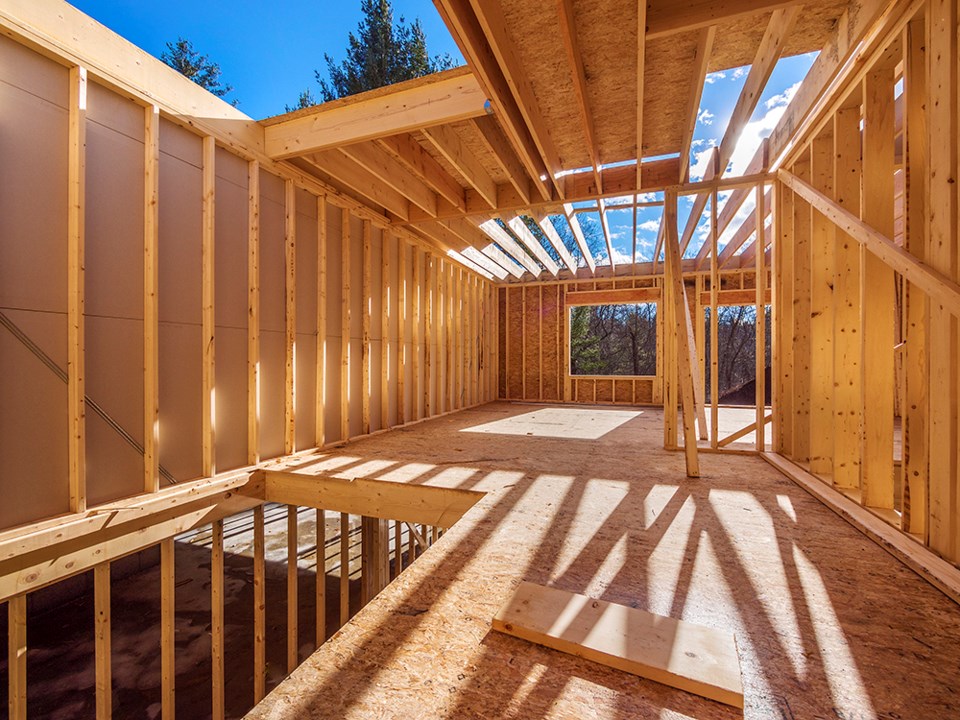The Regional District of Fraser Fort-George needs 847 new homes by 2026 and 1,864 by 2024 to meet anticipated demand, according to a housing needs report presented at the board of directors’ Dec. 19 meeting.
Under BC’s Local Government Act, local governments must receive an interim housing needs report by Jan. 1, 2025.
The figures in the report, which was prepared with the help of Victoria-based M’akola Development Services and Halifax-based Turner Drake and Partners, was developed using figures from the 2021 census.
Prince George city council received its interim report at its Dec. 2 meeting. The regional district’s interim report covers the seven rural electoral areas within its jurisdiction.
Like with the city’s report, the district’s breaks down the total number of housing units needed into six categories based on methodology handed down by the provincial government.
Seven of the needed units by 2026 and 26 of those needed by 2041 are for what’s called the extreme core housing need — those paying more than 50 per cent of their income towards shelter costs.
For people in the regional district experiencing homelessness, 99 are needed by 2026 and 198 by 2041.
To provide housing for those who have been unable to form a separate household due to market and economic conditions, known as suppressed households, 98 units are needed by 2026 and 391 units are needed by 2041.
In order to meet the expected growth in the number of households in the regional district, 641 units are needed by 2026 and 1,239 are needed by 2041.
The housing needs report calculates how many additional homes are needed to maintain a rental vacancy rate of three per cent. For the regional district, two units are needed for this purpose by 2026 and 10 are needed by 2041.
The final category of housing in the report is a buffer of units needed to meet additional demand. Unlike the City of Prince George, the regional district projects that it will not need any units for this purpose by either 2026 or 2041.
The number of units needed in the seven electoral areas are broken down as follows:
- Electoral Area A (Salmon River-Lakes): 250 by 2026 and 441 by 2041,
- Electoral Area C (Chilako River-Nechako): 80 by 2026 and 227 by 2041,
- Electoral Area D (Tabor Lake-Stone Creek): 280 by 2026 and 508 by 2041,
- Electoral Area E (Woodpecker-Hixon): 48 by 2026 and 88 by 2041,
- Electoral Area F (Willow River-Upper Fraser Valley): 56 by 2026 and 108 by 2041,
- Electoral Area G (Crooked River-Parsnip): 73 by 2026 and 95 by 2041,
- Electoral Area H (Robson Valley-Canoe): 124 by 2026 and 207 by 2041.
The district’s report also breaks down how many bedrooms will be needed for these units, as well as how many are needed at market rates, below market or affordable rates and deeply affordable rates.
For market housing, the district estimates it needs 105 zero- to one-bedroom units, 168 two-bedroom units, 141 three-bedroom units and 108 four- or more-bedroom units at market rates by 2026.
By 2041, the district estimates it needs 232 zero- to one-bedroom units, 376 two-bedroom units, 307 three-bedroom units and 248 four- or more-bedroom units at market rates by 2026.
For affordable housing, the district estimates it needs 139 zero- to one-bedroom units, 29 two-bedroom units, 18 three-bedroom and 12 four- or more-bedroom units by 2026.
By 2041, the district estimates it needs 300 zero- to one-bedroom affordable units, 64 two-bedroom units, 43 three-bedroom units and 27 four- or more-bedroom units at market rates by 2026.
For deeply affordable housing, the district estimates it needs 90 zero- to one-bedroom units, 19 two-bedroom units, 12 three-bedroom units and 8 four- or more-bedroom units by 2026.
By 2041, the district estimates it needs 186 zero- to one-bedroom deeply affordable units, 40 two-bedroom units, 27 three-bedroom units and 17 four- or more-bedroom units at rates by 2026.
Market housing is the largest category of needed housing in the report.
“If the estimated demand for market rental or ownership housing has been met, the region should not prohibit further development,” the report said. “The historical shortage of available housing across the housing continuum has been a major factor in escalating ownership and rental prices within the region.”
Director Owen Torgerson, the mayor of Valemount, said during the meeting he was glad to see that the report highlights the limitations of funding models for public transportation in rural areas compared to urban ones.

